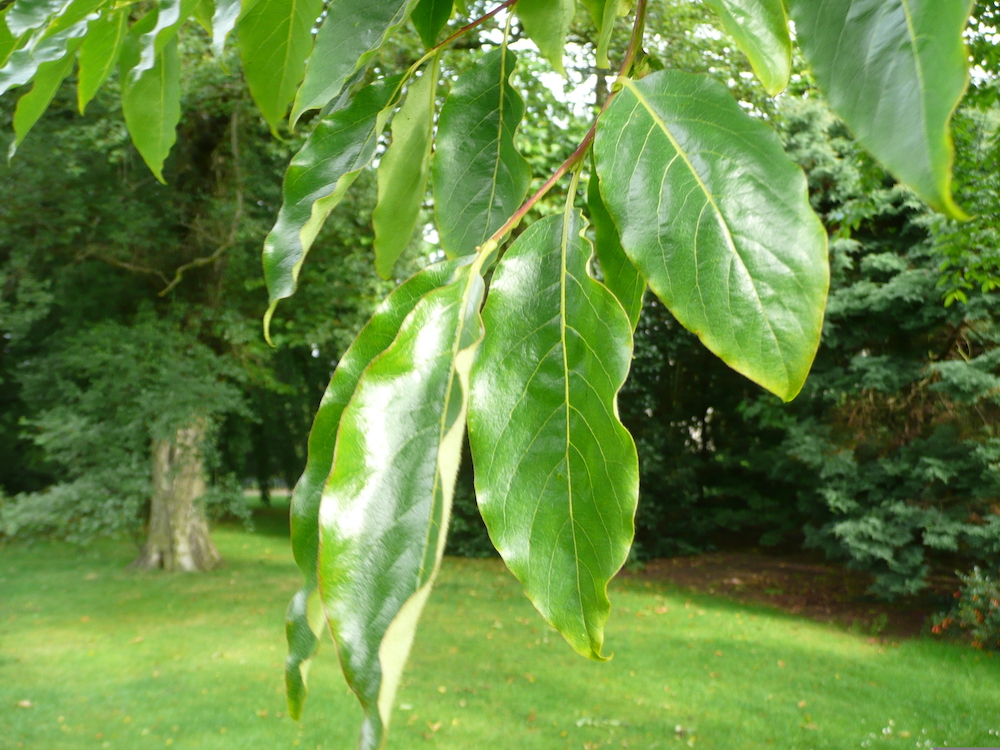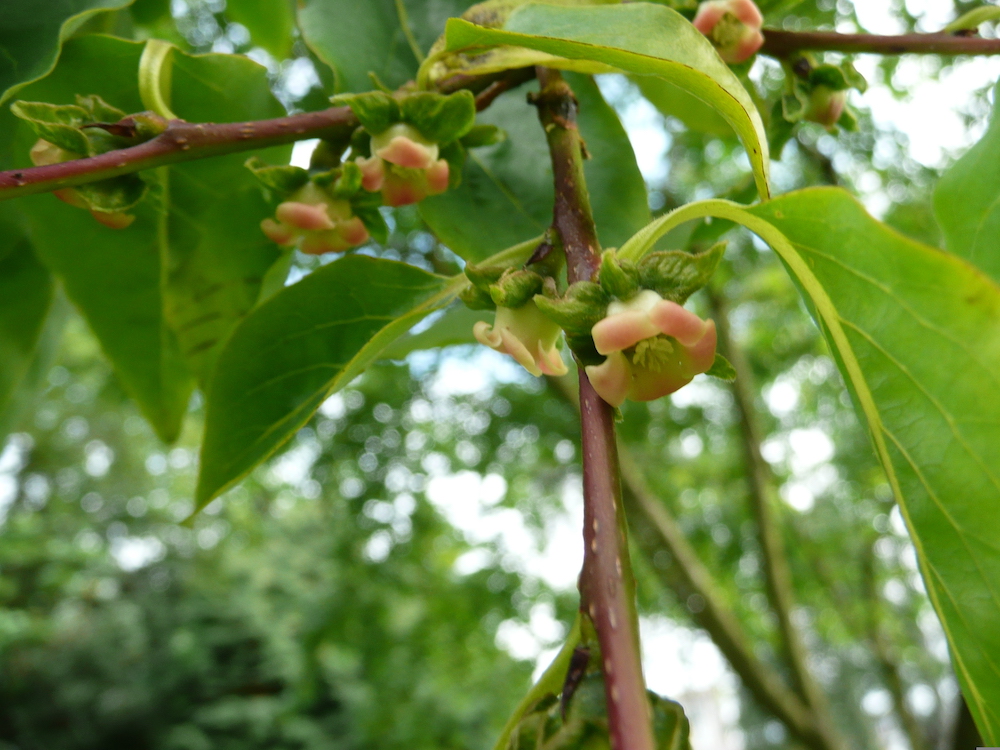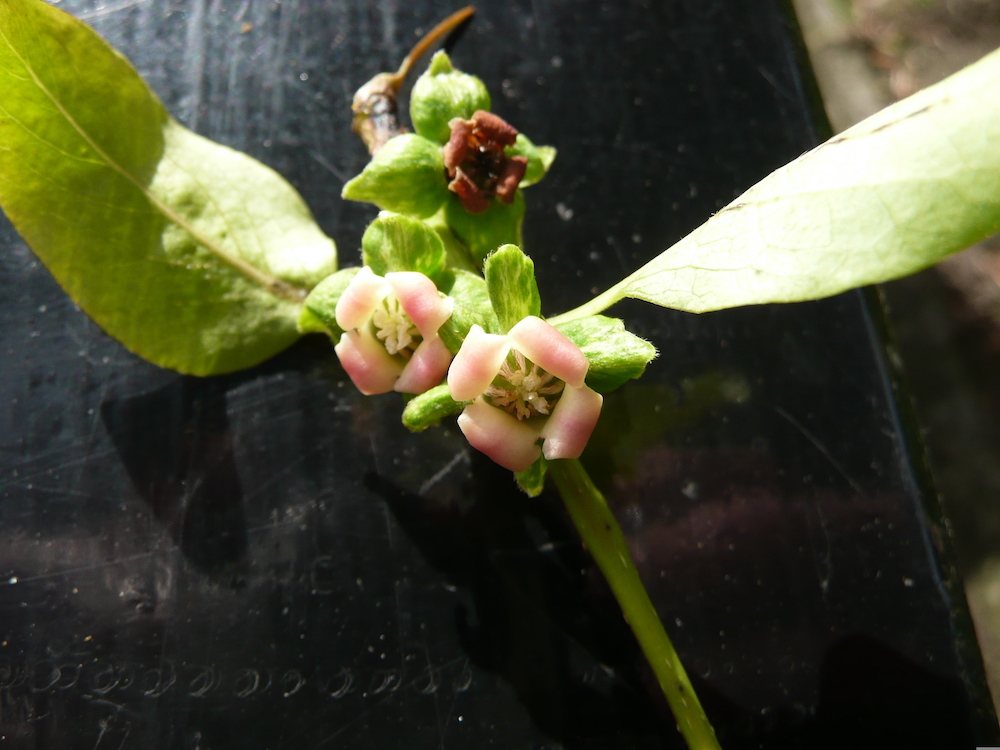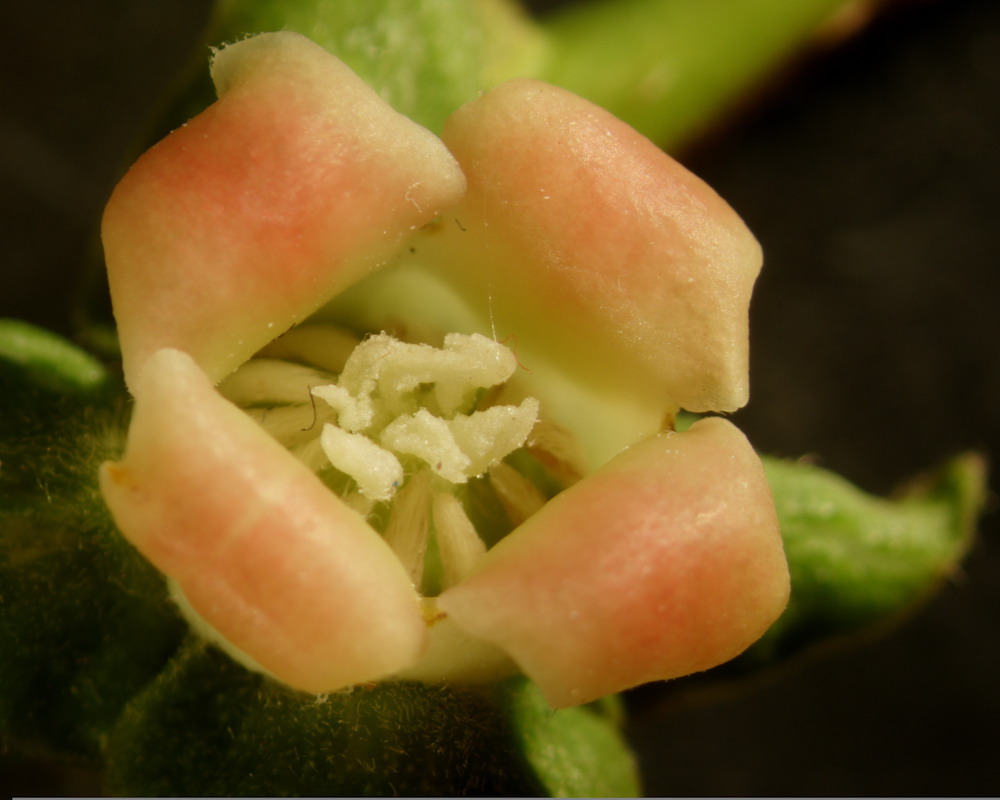Diospyros virginiana L.
North American persimmon
The North American persimmon is a native of eastern and southern United States, from New York to Texas. It is closely related to the persimmon D. kaki and to D. lotus the date plum, as well as to D. ebenum the source of ebony.
Rarely seen in Europe, it is exciting to have a handsome young specimen in Belfast (but see below). It develops into a tall elegant deciduous tree with distinctive grey-black bark that is sometimes described as tessellated, that is, cracked into squares like tiles (see photo below). The variable leaves are glossy with a pointed tip, and have a sweet scent when crushed. They give a good autumn display.
This species is dioecious (from the Greek meaning two houses): there are separate male and female trees. The Botanic Gardens tree is a female. Female flowers are solitary, bell-shaped, about 2 cm long and a pale yellow. Male flowers are clustered and paler. The fruit is round, with remnants of the style at the end in the form of a prickle, and is yellow with sometimes a red flush, similar to Sharon fruit though smaller.
Fruiting trees are a familiar sight on roadsides in America, but trees rarely set fruit in the UK, a pity as they are delicious when fully ripe after they have lost their initial astringency. They do best in warmer parts of the country. To secure a crop, one male tree should be planted for every 5 female, although female trees may produce seedless fruit even if not pollinated.
The wood is particularly hard and resistant to splitting, lending itself to specific uses such as golf club heads, shoe lasts and weaving shuttles, all demanding high quality shock resistance.
Perhaps, if global warming continues, persimmons will become a candidate for the orchard and more widely planted.
N.B. This tree, which had been showing signs of die-back for several years, was felled in October 2022. The problem may have been due to waterlogging. We hope a replacement can be found and planted elsewhere on the site.





Photos taken in Belfast Botanic Gardens in 2009. Copyright: Friends of Belfast Botanic Gardens.
